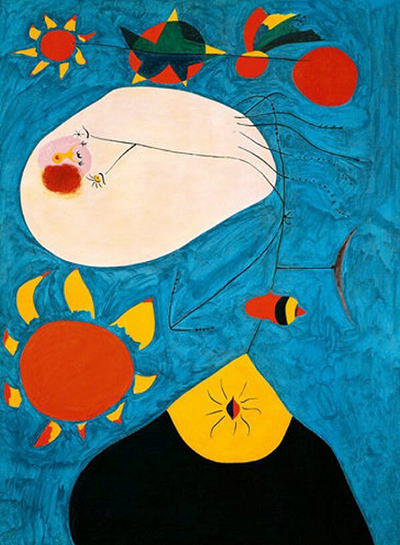This item from 1938 provides an example for how Miro used cosmology as inspiration for many of his abstract paintings. The colour scheme is typical of this period in his career, if slightly brighter because of the blue tone used for the background.
This artwork is dominated by the usual combination from Miro's work of large blocks of colour, with black lines helping to connect them together. We have a variety of colours here, with black, white, red and yellow being the most prominent. The brighter background is more dominant than would normally be the case, with perhaps Miro seeking to deliver a more positive outlook as well as considering how these tones work against the main content. In terms of deciphering the content, we can firstly see two suns, where the artist adds flames of yellow when normally he would simplify it to a single red circle. There are additional shapes alongside these which are connected at the top with a long black line. We then look towards the large masses of white and black to further understand the overall painting.
The black item at the bottom is believed to represent femininity, if we go with other artworks which made use of a similar object. It is the almond sign which delivers that within a yellow portion of the overall shape. There is then a fish-shaped, multi coloured portion just above which is known to be an abstract depiction of a woman's breast. The lines continue to form the rest of the body and connect everything together, rather than having a collection of independant body parts where the main message would be lost. This is essentially a female body, delivered through the abstract and surrealist style of this talented Catalan artist, but most who are not familiar with his work would be completely unaware of the meaning of the entire composition.




